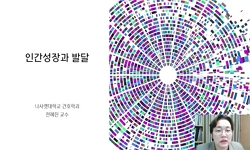생물의 착생은 식물이나 동물, 혹은 세포가 구조물 등 고정된 표면에 자라는 것을 말하며, 착생은 처음에는 수 분 안에 유기물들이 부착하며, 1일 후 세균과 규조류 등의 미세생물이 착생하...
http://chineseinput.net/에서 pinyin(병음)방식으로 중국어를 변환할 수 있습니다.
변환된 중국어를 복사하여 사용하시면 됩니다.
- 中文 을 입력하시려면 zhongwen을 입력하시고 space를누르시면됩니다.
- 北京 을 입력하시려면 beijing을 입력하시고 space를 누르시면 됩니다.
신방오제가 창자파래(Ulva intestinalis)의 착생과 성장에 미치는 영향 연구 = Effects of new antifouling biocides on attachment, germination and growth of Ulva intestinalis
한글로보기https://www.riss.kr/link?id=T12683133
- 저자
-
발행사항
아산 : 순천향대학교 대학원, 2012
-
학위논문사항
학위논문(석사) -- 순천향대학교 대학원 , 해양생명공학과 , 2012. 2
-
발행연도
2012
-
작성언어
한국어
- 주제어
-
DDC
571.7 판사항(22)
-
발행국(도시)
충청남도
-
형태사항
110 ; 26cm
-
일반주기명
지도교수 ; 신현웅
- 소장기관
-
0
상세조회 -
0
다운로드
부가정보
국문 초록 (Abstract)
생물의 착생은 식물이나 동물, 혹은 세포가 구조물 등 고정된 표면에 자라는 것을 말하며, 착생은 처음에는 수 분 안에 유기물들이 부착하며, 1일 후 세균과 규조류 등의 미세생물이 착생하고 1주일 후 거대조류와 원생동물 등이 착생하며, 2~3주 후에 동물성 거대 착생 종들이 착생한다. 그러나 다양한 해역에서 서로 다른 환경의 영향을 받으므로 각 단계가 반드시 순차적으로 일어나는 것은 아니다.
해양 착생생물들은 인공구조물이나 선체, 양식장 등에 경제적 손실과 환경적 영향을 주는 등 해양 착생생물들로 인한 많은 문제점들이 보고되고 있다. 생물오손을 방지 하고자 1979년 TBT의 강한 독성을 이용하여 착생을 방지하였는데, TBT는 착생생물뿐만 아니라 다른 비표적 생물에게도 영향을 미치어 많은 문제점들이 보고되었다. 또한, TBT는 분해되지 않고 오랜 시간동안 퇴적물에 축적되고, 주변 환경과 생태계에도 위해를 초래할 수 있음이 연구를 통해 확인되어 국제해사기구(International Maritime Organization, IMO)에서는 2003년 1월부터 선체 사용을 금지 하였다. 이에 따라 1990년 이후 부터 신방오제를 전 세계적으로 개발하여 이용되어 왔으나, 이들 물질들에 대한 환경 중 거동이나 해양생태계에 미치는 영향에 대해 충분히 평가되지 않은 채 사용되고 있다. 하지만 많은 연구자들에 의해 신방오제의 문제들이 보고되고 있으며. 신방오제의 사용을 제한하고 있다.
본 연구의 목적은 신방오제 Chlorothalonil, Copper pyrithion, Dichlofluanid, Irgarol-1051, Sea-nine 211, TBTCl, Zinc pyrithione 그리고 Ziram이 환경 지표 생물종인 창자파래(Ulva intestinalis)의 포자의 운동성 및 착생에 미치는 영향과 발아와 성장에 미치는 영향을 알고자 하며, 신방오제에 대한 성장과 엽록소에 미치는 영향에 대해서 상관관계 분석을 통하여 알고자 하며, 문헌검증을 통하여 방오물질에 대한 종-민감도 분포를 알고자 한다.
신방오제 대한 파래 포자의 운동성, 착생, 발아 그리고 성장 저해 검증에서 신방오제의 농도가 증가함에 따라 모든 실험에서는 같은 양상으로 저해하는 것으로 나타났다. 각 신방오제의 농도 구배 중 고농도에서는 포자의 운동성을 75~100%(매우 강함, ++++)로 저해하는 것으로 나타났고, 착생 저해 검증에서는 26.804~38.102 cell ㎜-2로 저해하는 것으로 나타났다. 그리고 발아 저해 검증에서는 발아를 5.222~6.15 cell ㎜-2로 저해한 것으로 나타났으며, 성장 저해 검증에서는 포자의 성장을 0.126~0.184 cell ㎜, 엽록소 a는0.671~0.958 ㎎ L-1, 엽록소 b는 0.664~0.829 ㎎ L-1로 저해한 것으로 나타났다. 신방오제에 대한 파래 포자 발아의 EC50을 값이 높은 순으로 Dichlofluanid 7.941 ㎎ L-1로 가장 높은 값을 나타냈으며, 가장 낮은 값을 나타낸 Copper pyrithion은 0.0003 ㎎ L-1로 나타났다(Dichlofluanid > Chlorothalonil > Sea-nine 211 > Ziram > Zinc pyrithione > TBTCl > Irgarol-1051 > Copper pyrithion). 그리고 성장의 EC50 값도 같은 순서로 Dichlofluanid 14.968 ㎎ L-1로 가장 높은 값을 나타냈으며, 가장 낮은 값을 나타낸 Copper pyrithion은 0.009 ㎎ L-1로 나타났다(Dichlofluanid > Chlorothalonil > Sea-nine 211 > Ziram > Zinc pyrithione > TBTCl > Irgarol-1051 > Copper pyrithion). 따라서 신방오제의 농도에 따라 포자의 발아와 성장에 같은 양상으로 영향을 미치는 것으로 판단된다.
문헌 검증을 통한 종-민감도 분포 HC5를 값이 높은 순으로 Dicholofluanid 9.722 ㎍ L-1로 가장 높은 값을 나타내었으며, 가장 낮은 값을 나타낸 TBT는 0.017 ㎍ L-1로 나타났다(Dicholofluanid > Chlorothonil > Ziram > Copper pyrithione > Zinc pyrithione > Sea-nine 211 > Irgarol-1051 > TBT). 그리고 HC50 값도 비슷한 순서로 Dichlofluanid 184.1953 ㎍ L-1로 가장 높은 값을 나타내었으며, 가장 낮은 값을 나타낸 TBT는 1.645 ㎍ L-1로 나타났다(Dichlofluanid > Ziram > Chlorothonil > Copper pyrithione > Sea-nine 211 > Zinc pyrithione > Irgarol-1051 > TBT).
본 연구 결과와 선행 연구결과를 보면 신방오제 모두 생태계에 위해성이 있는 것으로 나타났다. 이에 따라 신방오제의 지속적인 생태계 모니터링을 통한 관리방안이 구축되어야 하며, 사용규제를 강화할 필요성이 있다고 사료된다. 또한, 기존의 신방오제 보다 방오능과 경제성이 뛰어나고 해양 생태계를 파괴하지 않는 친환경 방오물질 개발이 시급하다고 판단된다.
다국어 초록 (Multilingual Abstract)
The first step of biofouling is started in a few minute with accumulation of organic matter on surface of any submerged permanent structures and one day after bacteria and diatoms started to attach. One week later macroalgae, protozoa etc. colonize on...
The first step of biofouling is started in a few minute with accumulation of organic matter on surface of any submerged permanent structures and one day after bacteria and diatoms started to attach. One week later macroalgae, protozoa etc. colonize on surfaces and 2-3 weeks after macrofouling fauna started to attach. Each of the seas and oceans have different environmental characters therefore, these fouling steps are not in the same order.
Marine fouling on aquaculture structures, ship and other permanent marine structures leads to environmental and economical problems. To prevent the biofouling in 1979, TBT (tributyl-tin) was used as a major source of AF agent. However, TBT is not only effective against fouling organisms, but it also affects nontarget organisms. Its degradation process in seawater takes a long time to accumulate in sediment. Because of these severe environmental problems caused by TBT, in January 2003 the International Maritime Organization (IMO) implied a global ban. Much before this ban, after realizing the ill effects of TBT, in 1990 search for a new AF agent is started, but many of these alternative AF agents are not fully investigated. These new AF biocides also have severe impacts on marine environment. Many researchers investigated the impacts of these new AF agents about their fate and environmental impacts. Based on these findings application of few new biocides in AF coatings are restricted. The main purpose of this study was to investigate the impacts of Chlorothalonil, Copper pyrithion, Dichlofluanid, Irgarol-1051, Seanine-211, TBTCl, Zinc pyrithione and Ziram on motility, attachment, germination, growth and chlorophylls of an indicator species, Ulva intestinalis. Based on the reported lethal and effective concentrations of AF biocides on various marine species, SSD (species sensitivity distribution) curves were plotted.
Each new AF agent at high concentration was found to inhibit the Ulva spore motility by 75-100%. In spore attachment assays, results showed that at high concentrations of AF biocides, mean spore attachment decreased to 26.804-38.102 cells mm-2, when compared to control. At high concentrations of AF biocides, germination of the Ulva spores decreased to 5.222-6.15 cells mm-2, when compared to control. In growth experiments, a thigh concentrations of AF biocides, the mean germling length decreased to 0.126-0.184 mm, when compared to control. At high concentrations of AF biocides, in relation to growth the mean levels of chlorophyll a and b decreased to 0.671-0.958 mg L-1 and 0.664-0.829 mg L-1, respectively, when compared to control. EC50 of Dichlofluanid to inhibit Ulva spore germination was found to be high (7.941 mg L-1), whereas it was relatively low for Copper pyrithione (0.0003 mg L-1). The order of toxicity against spore germination was: Dichlofluanid > Chlorothalonil > Sea-nine 211 > Ziram > Zinc pyrithione > TBTCl > Irgarol-1051 > Copper pyrithione. The EC50 values calculated for growth was also found in the same order. In which EC50 calculated for Dichloflunid was high with 14.968 mg L-1 and low for Copper pyrithione with 0.009 mg L-1. It appears that new AF biocides at concentrations administered in this study have similar impacts on germination and growth.
SSD curves plotted with previously reported results exhibited HC5 with high concentrations for Dichlofluanid (9.722 ㎍ L-1), whereas low concentration for TBTCl (0.017 ㎍ L-1). The order of HC5 calculated was: Dichlofluanid > Chlorothalonil > Ziram > Copper pyrithione > Zinc pyrithione > Sea-nine 211 > Irgarol-1051 > TBT. HC50 results also exhibited a high values for Dichlofluanid (184.1953 ㎍ L-1) and low value for TBT (1.645 ㎍ L-1). The order of H50 values calculated was: Dichlofluanid > Ziram > Chlorothalonil > Copper pyrithione > Sea-nine 211 > Zinc pyrithione > Irgarol-1051 > TBT.
SSD plots made with the toxicity results of this study and the previously reported results showed the magnitude of each AF biocide’s ecological impacts. Therefore, environmental impacts of new AF biocides need to be continuously monitored to develop an effective marine environmental management system. It is urgent need to characterize new AF agent introduced in the market based on its AF ability, cost effectiveness and eco-friendliness to protect marine ecosystem health.
목차 (Table of Contents)
- 국문 요약-------------------------------------ⅰ
- 표 목록---------------------------------------ⅲ
- 그림 목록-------------------------------------ⅵ
- Ⅰ. 서론---------------------------------------1
- Ⅱ. 재료 및 방법-------------------------------21
- 국문 요약-------------------------------------ⅰ
- 표 목록---------------------------------------ⅲ
- 그림 목록-------------------------------------ⅵ
- Ⅰ. 서론---------------------------------------1
- Ⅱ. 재료 및 방법-------------------------------21
- 1. 생물 시료----------------------------------21
- 2. 대상 방오물질------------------------------21
- 3. 파래 포자의 운동성 및 착생 저해 검증--------24
- 1) 운동성 저해 검증--------------------------24
- 2) 착생 저해 검증----------------------------25
- 4. 파래 포자의 발아 및 성장 저해 검증----------28
- 1) 발아 저해 검증----------------------------28
- 2) 성장 저해 검증----------------------------29
- ① 발아 길이 측정---------------------------29
- ② 엽록소 측정-----------------------------30
- 5. 통계분석----------------------------------33
- 6. Effective Concentration(EC)₅₀ 측정---------33
- 7. 방오물질에 대한 종-민감도 분포-------------33
- Ⅲ. 결과--------------------------------------34
- 1. 파래 포자의 운동성 및 착생 저해 검증 결과---34
- 1) 운동성 저해 검증 결과---------------------33
- 2) 착생 저해 검증 결과-----------------------38
- 2. 파래 포자의 발아 및 성장 저해 검증 결과-----43
- 1) 발아 저해 검증 결과-----------------------43
- 2) 성장 저해 검증 결과-----------------------48
- 3. Effective Concentration(EC)₅₀ 측정 결과-----65
- 4. 방오물질에 대한 종-민감도 분포 결과---------67
- Ⅳ. 고찰--------------------------------------74
- Ⅴ. 참고문헌----------------------------------78
- ABSTRACT
- 감사의 글












